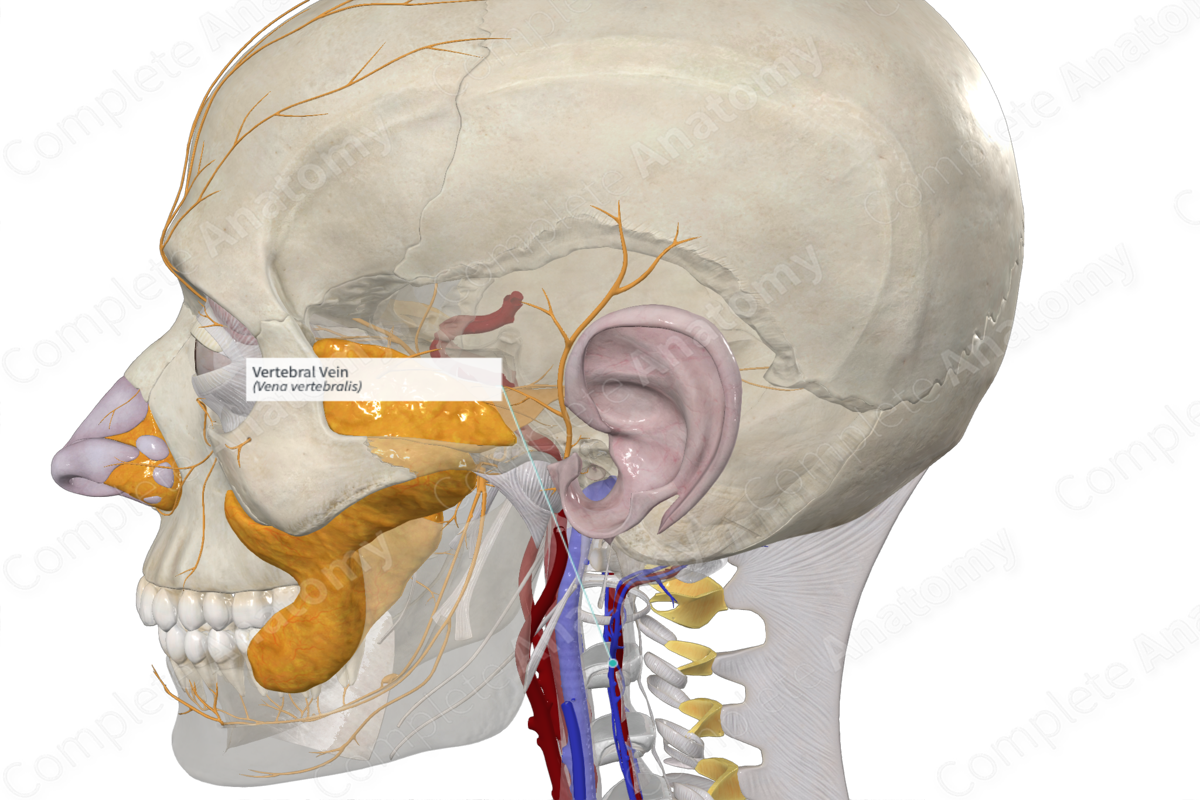
Quick Facts
Origin: Suboccipital triangle.
Course: Descends in the foramina transversaria of the upper six cervical vertebrae.
Tributaries: Intervertebral, anterior vertebral, and deep cervical veins.
Drainage: Vertebral column and suboccipital region.
Origin
The vertebral vein originates from a venous plexus in the suboccipital triangle.
Course
The vertebral vein descends in the foramina transversaria of the upper six cervical vertebrae and forms a plexus around the vertebral artery. After emerging from the foramen transversarium of the sixth cervical vertebra, the vertebral vein descends anterolateral to the vertebral artery. It passes behind the internal jugular vein and anterior to the first part of the subclavian artery, before draining superoposteriorly into the brachiocephalic vein.
Tributaries
The vertebral vein receives the intervertebral, anterior vertebral, and deep cervical veins.
Structures Drained
The vertebral vein drains the muscles of the suboccipital triangle and the cervical part of the vertebral column.
Learn more about this topic from other Elsevier products




